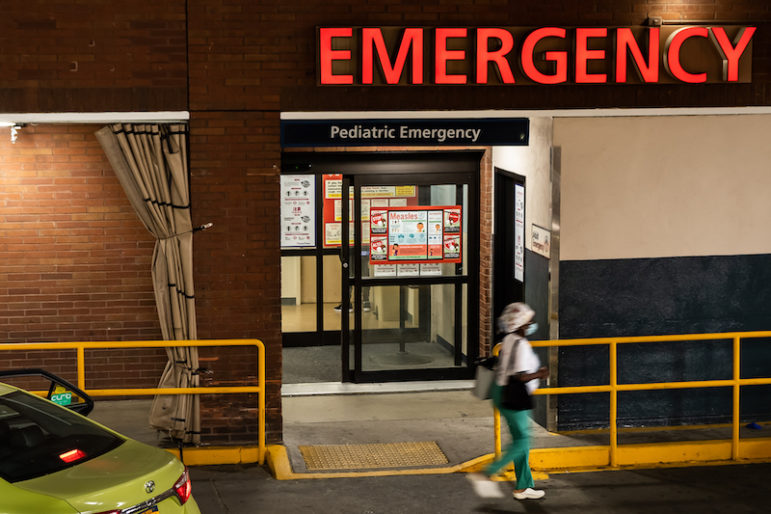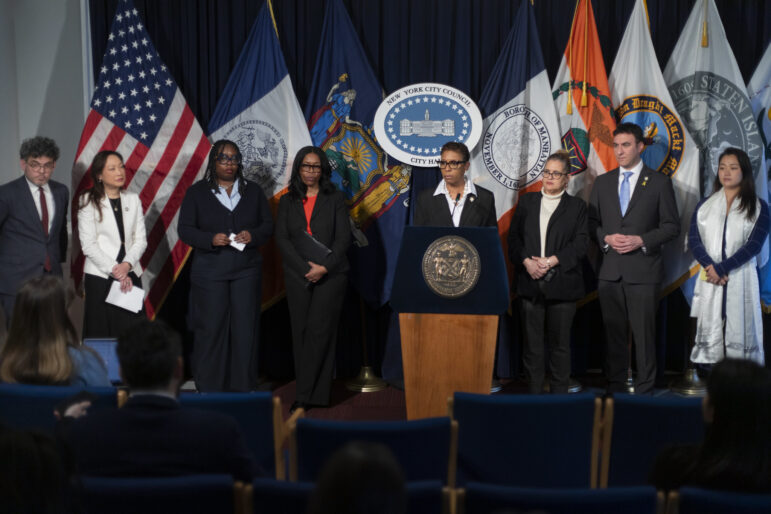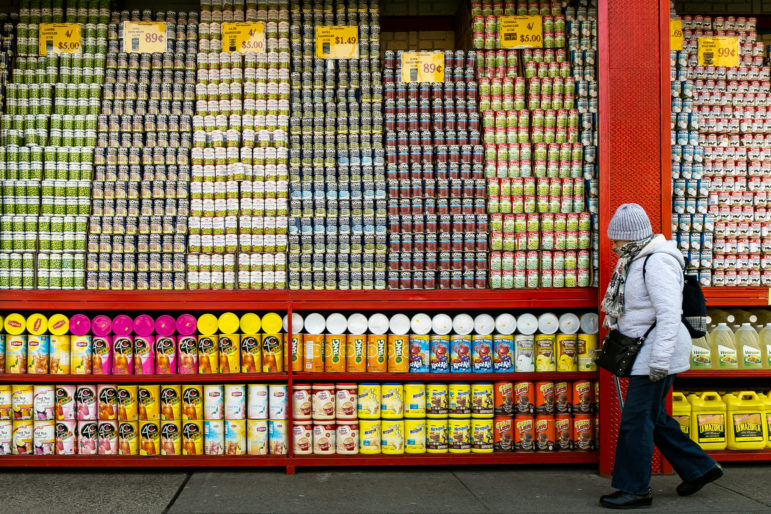When Mayor Michael Bloomberg and Schools Chancellor Joel Klein reported last May that New York City’s high school four-year graduation rate hit 60 percent in 2006, the news was cheered. It was, after all, the highest rate since the city started keeping track 20 years ago, and the fourth year of improvement since the mayor took control of the school system from the Board of Education in 2002.
But the progress being made in the city’s 300-odd high schools, while promising, is limited and might not be lasting, reports City Limits Investigates in the winter edition, Exit Strategy, released today.
Despite the real gains the mayor and chancellor reported, some 10,000 students dropped out of the class of 2006, and 17,000 remained enrolled after four years—which, experience indicates, means they’re more likely to eventually join the ranks of dropouts. Among those considered “graduates” were thousands of students who obtained not diplomas but GEDs, and thousands of others who obtained a “local diploma” that will soon be phased out in favor of a more demanding Regents diploma. Absent from the statistics altogether are thousands of students who were discharged from city schools—kids who left the system ostensibly to attend other schools, but in some cases are actually headed only to quietly drop out. There’s reason to believe that the New York City Department of Education (DOE) is still failing to track discharged students as well as it should.
New York’s efforts to improve graduation rates are part of a national movement to increase the number of students who obtain diplomas—an endeavor motivated by the individual and societal benefits linked to graduation. Statistics show that people with diplomas tend to have higher incomes and enjoy better health, and are more likely to avoid incarceration. High school graduates pay more in taxes and use fewer government-funded services such as welfare or prison. Graduation rates also are one of the yardsticks by which President Bush’s signature education program, the No Child Left Behind Act, measures schools.
Locally, graduation rates are also likely to play a part in the looming discussion over whether to renew mayoral control of schools, which lapses in 2009 if the New York state legislature doesn’t renew it. They also will figure prominently in any discussion of Bloomberg and Klein’s educational legacy, as the schools chancellor acknowledged in an interview. “I am clearly accountable,” Klein told City Limits Investigates reporter Helen Zelon. “If the graduation rate goes down, if the city doesn’t improve, I am accountable.”
Klein’s program for improving high school graduation is two-pronged. On one hand, the city—sometimes with outside nonprofit partners—is breaking large, traditional high schools into smaller ones, aiming to give kids more individual attention. Meanwhile, the DOE also has created new paths to graduation for kids who aren’t succeeding in traditional high school settings. Among these are Young Adult Borough Centers, where students who are getting too old for high school can earn the credits they need to receive a diploma.
Some of the new, small schools are posting better graduation rates. But critics point out that many of the small schools are barred from enrolling special education students and non-English speakers—moves that improve the small schools’ statistical performance, but deprive some students of options and saddle the remaining large schools with harder-to-serve kids.
Meanwhile, relatively few students are taking advantage of the alternate schools the DOE has created: Only 16 percent of high schoolers at risk of dropping out attend those programs. Some students might have trouble navigating the entry requirements for these schools, which vary among alternative facilities. Or, as noted above, they may be kept out if they have special educational needs. Those students who do take an alternate path aren’t well tracked: The DOE could not say how many students it had sent to various programs in 2007, nor could it detail how many students actually remained in their new placements.
That raises concerns among some advocates that those students are being “pushed out” of their original high schools into alternative programs where, because they aren’t well tracked, they might drop out but not be counted as such. The DOE for years has faced allegations that it condones “push outs,” in which administrators press failing students to leave high schools as “discharges” in order to improve schools’ performance. In a 2004 settlement of a lawsuit over push outs, the DOE promised to conduct interviews of discharging students to prevent dropouts. Despite repeated requests, the DOE didn’t provide data about those interviews to City Limits Investigates. DOE officials insist that they strictly prohibit push outs, but administrators, teachers and students say they still occur.
There’s no denying that New York’s high schools face an awesome task. They welcome ninth graders who read at a third-grade level, immigrants who arrive mid-year from war-torn countries or travel back and forth between New York and their homeland, and other students who are themselves parents, served jail time, lack parental support or live in poverty.
Faced with these challenges, some high schools are developing new approaches to getting failing students ready to graduate. New Utrecht High School in Bay Ridge plans on kids spending five years in high school rather than four, and uses the first year to bring students up to speed. Sheepshead Bay High School’s Fast Track program gives students who are behind the chance to earn credits very quickly. John V. Lindsay Wildcat Academy links students with internships. Community Prep high school sets obtainable goals for kids re-entering school after a stint behind bars.
In his State of the City speech last Thursday, Bloomberg announced that the city would end social promotion for eighth graders and improve vocational education in high schools. Both moves could affect the graduation rate. Today, principals complain that many incoming ninth graders aren’t prepared for high school work. And the emphasis on college-track programs in high school—something Bloomberg and Klein have long championed—has offered little to students interested in becoming mechanics, tradespeople or entrepreneurs. Offering better-developed career and technical education could encourage more kids to stay in school and graduate.
But even as Bloomberg and Klein continue to generate new strategies, other changes are about to make the task facing high schools and students even tougher.
Beginning with the class that enters in 2008, high school students will no longer have the option of earning a local diploma, which has been a refuge for kids who couldn’t pass the Regents exams. Now, because the city and state decided to toughen requirements, all students will need Regents diplomas to graduate. About a third of the students who graduated in 2006 obtained only local diplomas. That means that if they had been held to the new standards, the graduation rate might have been closer to 40 percent, not 60 percent. Black and Hispanic graduates—only half of whom earned the Regents, compared to more than three-quarters of whites and Asians—would have been hit hardest. At the same time, standards for the Regents diploma are getting tighter, with higher scores required to qualify.
So New York City’s high school students will be faced with fewer, more difficult options. The likely impact: a lower graduation rate for the city, and thousands of students who’ll miss the chance at a better life that a diploma affords.







